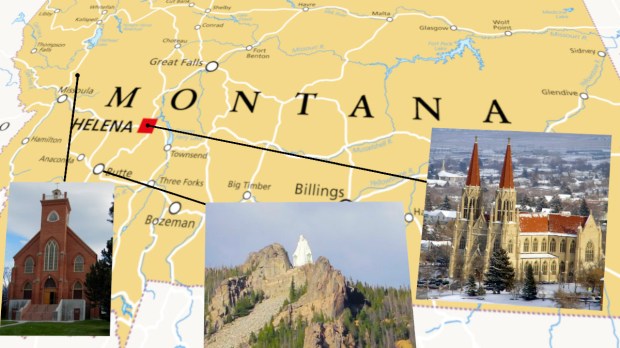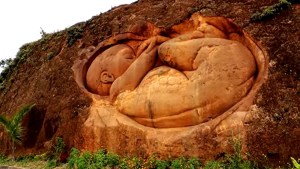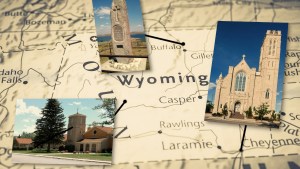As we continue our series on Catholic sites in various states, the story of Montana is a really special one, revealing an awe-inspiring desire of the local people to bring the Catholic faith to their homeland.
Inspiring faith of the Flathead Indians
The Catholic history of Montana began with the local Native Americans actually sending out messengers to bring priests to their area, where no priests had gone before!
Here is the incredible true story, according to the The Diocese of Great Falls-Billings:
The Catholic faith came to Montana through a band of Iroquois Indians who had been instructed and baptized by Father Isaac Jogues. Arriving in the early 19th century in what is now known as the Bitterroot Valley, they were well received by the Flathead tribe. The Iroquois intermarried and became members of the Flatheads, sharing their Catholic faith in a way that prompted the Flatheads to send several delegations to St. Louis asking for a “blackrobe” to come and minister to them. Finally, the third group was successful in reaching St. Louis where Bishop Rosati promised to send Father DeSmet to them.
On June 30, 1840 Father DeSmet, SJ was met by 1,600 Indians at Green River, Wyoming, to accompany him as he journeyed toward the Bitterroot Valley of Montana. Father DeSmet celebrated the first Mass in what is now Montana on July 26, 1840, near what is known today as Three Forks. When he saw the zeal of the Flatheads and the need for missionaries, Father DeSmet returned to St. Louis and brought back two other priests and two Jesuit lay-missionaries.
St. Louis is over 1,500 miles from the Bitterroot Valley; at that time there were no railroads and the only means of travel available were walking or horseback riding. Journeying from Montana to St. Louis would take between two weeks and two months, depending on speed, and that’s just in one direction.
Take a minute to imagine that delegation of Iroquois and Flathead Indians walking or riding across that vast and mountainous distance just to ask for a priest to come to them. And it took three tries making that journey before the priest finally came.
The faith, courage, dedication and persistence of these 1800s Catholics takes my breath away.
Big growth under Bishop Brondel
When a priest, Fr. DeSmet, finally came to Montana in 1840, the faith quickly spread, especially after the appointment of the dynamic Bishop Brondel. Just look at how Montana Catholicism grew explosively under his episcopate:
Montana became a vicariate apostolic in 1883, and in 1884 the Holy See established the Diocese of Helena, coextensive with the entire territory, with John Baptist Brondel, bishop of Victoria, Vancouver Island, Canada, and vicar apostolic of Montana as its first bishop.
Until his death on Nov. 3, l903, Brondel labored diligently to build the diocese among Native Americans, as well as trappers, miners, and other immigrants to the area.
When he arrived in l884, there were four diocesan priests, 12 religious priests, 16 churches, four hospitals, two parochial schools, two schools for Native Americans and a Catholic population of 15,000.
By 1903, the last year of his life, there were 38 diocesan priests, 15 religious priests, 65 churches, eight hospitals, nine parochial schools, ten schools for Native Americans and a Catholic population of 50,000.
Today, nearly 200 years later, there are some 113,000 Catholics in the Treasure State, about a quarter of Montana’s population.
If you’re traveling to Montana, or if you call Montana home, don’t miss these 5 special and historically significant sites in Big Sky Country.
1
St. Ignatius Mission Parish, St. Ignatius
That first priest in Montana, Father De Smet, S.J., and another priest, Father Adrian Hoecken, S.J., founded the St. Ignatius Mission Parish in 1845 along the Washington/Idaho border. It moved to its present location in 1854.
The Mission, and the town that grew up around it, were the home to Montana’s first Jesuit theologate and industrial arts school, first Catholic religious sisters as of 1864, first Catholic school, and first hospital.
St. Ignatius Mission is the oldest continually active Catholic parish, in the Jesuit tradition, in the West, and is on the National Register of Historic Places. If you visit, don’t miss the 58 murals painted by Brother Joseph Carignano, an untraine`d artist who worked as a cook in the mission but had exceptional artistic talent!
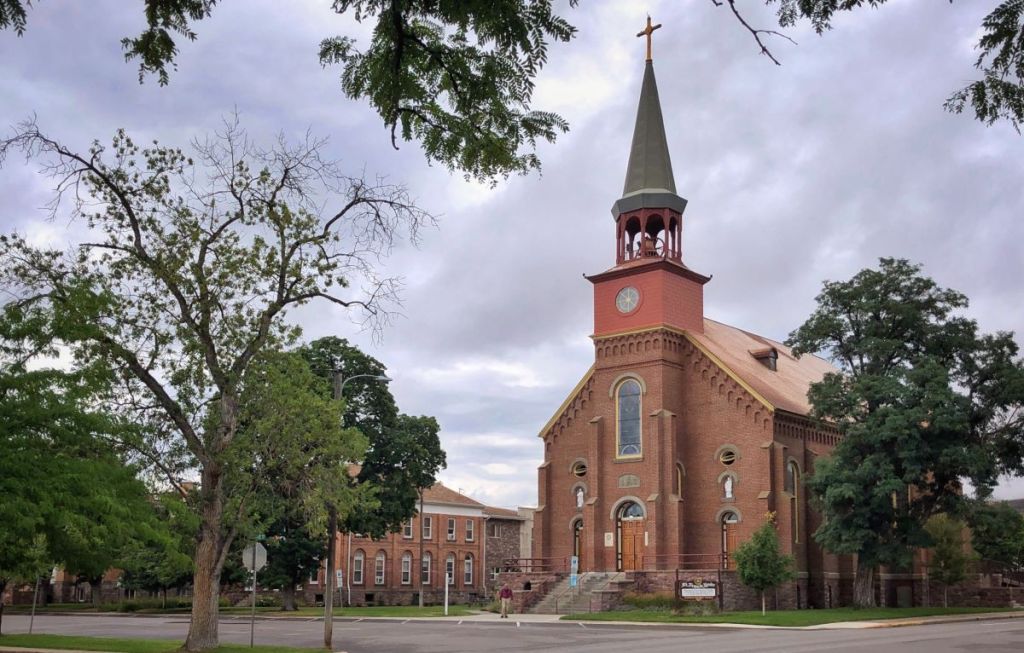
2
St. Francis Xavier Parish, Missoula
Once the first Montana missions were established, Catholics in the Missoula valley began to petition the Jesuits for pastoral care as well. At last in 1881, diocesan authorities were able to establish a Jesuit parish in Missoula.
In 1891, the Jesuits laid the cornerstone for the largest church constructed in Montana at that time. The Church of St. Francis Xavier was completed by October of 1892.
This church is also notable for its Carignano murals. The humble Italian cook graciously used his untrained but considerable talents to beautify sacred spaces throughout the region.
You can read more about the “Michelangelo of Montana” and conservation efforts for his artwork in the Flathead Beacon and these art and history sections.
3
The Cathedral of St. Helena, Helena
Bishop Brondel dreamed of building a magnificent church in the Capital City, and once told a reporter, “It is the church of the living God, and should be more commodious, more imposing, Ah! I can almost see in imagination a great stone church with lofty spires and a bell tower.”
He did not live to see this longed-for cathedral, but his successor made it a priority, and in 1908 construction began on this cathedral that is a “symphony of color and light, majesty and holiness.” Its architect modeled the Gothic cathedral after the Votivkirche in Vienna, Austria.
You can read more about its history here. Today this stunningly gorgeous cathedral is home to a thriving church community offering many ministries, devotions, and events.
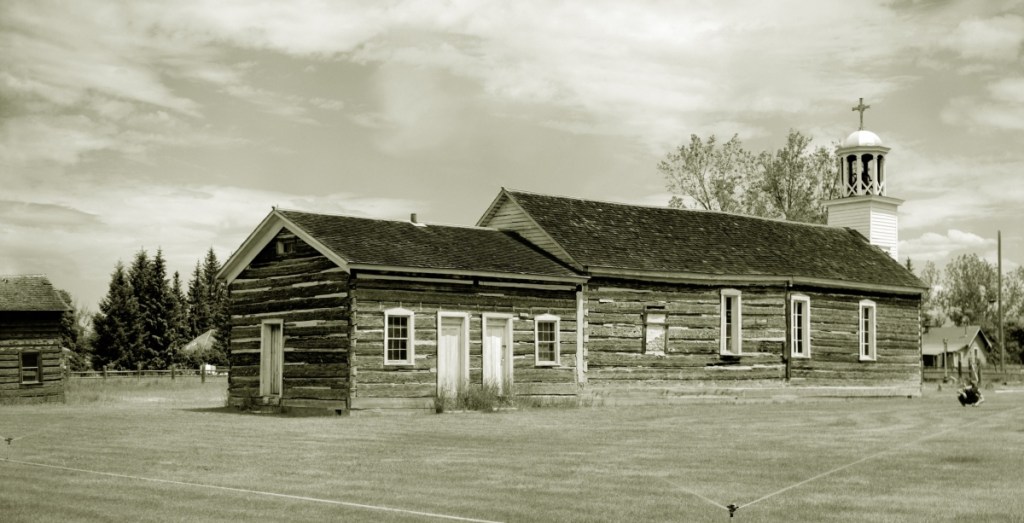
4
Historic St. Mary’s Mission and Museum, Stevensville
The first Mass in Montana took place at what became St. Mary’s Mission, founded on September 24, 1841. This first church and pioneer settlement began 48 years before Montana attained statehood!
Today this historic site is a museum, although it is no longer a functioning Catholic church. The old Mission affords a look back to Montana’s first pioneer community – the place where agriculture, medicine, education and religion were first introduced. You can read more about the Catholic history of the region on the museum website.
5
St. Patrick Co-Cathedral, Billings
Dedicated in 1908, this beautiful Gothic church has been a spiritual home to local Catholics for over one hundred years. It was not elevated to the level of a cathedral, however, until 1980, when St. John Paul II renamed the Diocese of Great Falls as The Diocese of Great Falls-Billings, because of the population growth in Yellowstone County.
Soon after, St. Patrick was named the Co-Cathedral along with St. Ann’s Cathedral in Great Falls. Don’t miss the beautiful stained glass windows!
BONUS SITE
Our Lady of the Rockies, Butte
Our Lady of the Rockies is a 90-foot-tall statue of Mary, the mother of Jesus, that sits atop the Continental Divide overlooking Butte. It is the fourth-tallest statue in the United States.
Butte resident Bob O’Bill promised the statue in gratitude to the Virgin Mary following the recovery of his wife from cancer. The community came together to build it, a project that took over six years. Later, the statue was additionally dedicated to “all women, especially mothers.”
